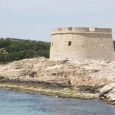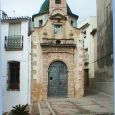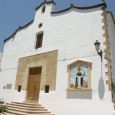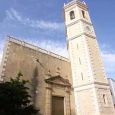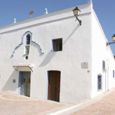Teulada
Advertisement
By air
Nearest airports to Teulada are sorted by the distance to the airport from the city centre
Muchamiel Alicante Airport (distanced approximately 59 km)
Talladega Airport (distanced approximately 70 km)
Alicante Airport (distanced approximately 76 km)
Valencia Airport (distanced approximately 98 km)
Ciudad-Quesada-Alicante Airport (distanced approximately 100 km)
By railway
Teulada Train Station is conveniently located just outside the centre of this traditional Spanish town, close to the taxi rank and bus stop that links Teulada to Moraira. The bus operates all day and costs just couple of euros for a return ticket to Moraira. It is also possible to stay on the bus through to Calpe.
The train operates up and down the Costa Blanca coast and stops at towns such as Alicante, El Campello, La Villajoyosa, Benidorm, Altea, Calpe, Benissa, Teulada Moraira, Gata de Gorgos, La Xara and Denia.
Advertisement
Church of Santa Caterina
You can date the start of construction early in the last third of the XVI century, on an early Gothic church was built between the late fourteenth and early fifteenth century. The building of this temple serves a dual function: religious and defensive. The continuous attacks of the Barbary piracy since the coasts of Africa and often severely punished the people of Valencian coast. Architecturally the church currently consists of two distinct parts: the primitive, the sixteenth century, and a number of extensions that range from the eighteenth century to today.
I Jurats Room Teulada Justicia
Built in the second decade of the seventeenth century, at a time of urban sprawl, economic and demographic of the town. We know the date 1620, possibly the end of the building that we see in the eaves of the main facade. The portico that presides over the building has served in the past of procurement and commercial market. The Hall, popular name of this building is an example of seventeenth-century civil architecture that is oriented to the south and built of stone "coarse" and the plant is rectangular, single-bay. The front has a harmonious symmetry with a central balcony and two vertical rectangular windows, agreeing on the bottom with the three arches carpanel type.
Castillo de Moraira
It is known by this name the fort that stands on a rocky outcrop overlooking the rough stone beach Ampolla and the whole bay of Moraira. Contrary to widespread opinion dated this stronghold in the sixteenth century as a work of John B. Antonelli, we now know it was built in the eighteenth century. On the gateway overlooking the royal shield of the house of Bourbon, which is dated 1742, possibly the year of completion of the work. It is a building with ground beef leg with semicircular facade facing south, the entrance is through the northern part where there was a protective grip in front of the door architrave, which was entered after crossing a ditch, on which had a drawbridge. The walls are sloped with a height of 10 meters and built of ordinary masonry, lined with blocks of stone from the same coastal area
Capd'Or Tower
This tower, like many others that are along the Mediterranean coast, was built following the report issued by the architect JB Antonelli the then King Philip II, the year 1563. We proceeded to the construction to protect the coastline from possible incursions by pirates. Built on the highest point of the Golden Cape and almost on the edge of the cliffs, is circular, with a perimeter of 26 meters, and the sloping walls built with ordinary masonry and plastered with mortar. The wall is topped by corbels on the eastern side, support a brocket. The tower, 11 meters high, is all of it solid to more than half, so that it can not be accessed from inside the ground for lack of any door.
Shrine of the Divine Shepherdess
There are no documentary evidence to give us to know the time of the construction of the chapel, but we know that was renovated in 1861 and that in the 70's of XIX century was placed the bell in the belfry. First we must mention the existence of two styles: the cover, renancentista and the rest of the chapel, baroque.
Ermita de la Font Santa
The origin of this shrine can be traced back to ancient times, specifically to the fifteenth century, the date on which, according to tradition, St. Vincent Ferrer made the miracle of bringing forth water on the stone at the request of her sister Constance, who lived in Teulada, from then we say that the source water is flowing drop by drop, without changing the flow rate, whether wet or very dry years. While this tradition relates to the said century, it seems that the current building of the chapel should date it about the middle of the nineteenth century .
July - October
Information not available
Advertisement

